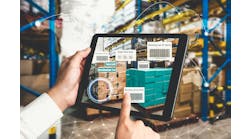Even in these technologically accelerated times, many companies are slow to adopt the cost-cutting technologies available to their industries. The challenges of the current economic slump and fear of the future has forced cautious business owners and CEOs to avoid any capital investments. To their detriment, however, companies that are digging in their heels against technological change are likely to be overtaken by their adaptable and progressive competitors as the economy begins to regain momentum.
Improve Efficiency and Your Bottom Line
Advancements in supply chain efficiencies over the past 10 to 20 years can be attributed to technologies, including barcoding, RFID, SaaS, computerized inventory systems, EDI, Internet ordering and exchange of forecasting information. These technologies have made it possible to link departments and networks of suppliers and consumers. The potential of such technologies is significant, but the fear of business owners continues to be the seamless integration of these systems within their organizations.
As Winston Churchill once said, “There is nothing wrong with change if it is in the right direction.” This wisdom is relevant to companies struggling with supply chain inefficiencies. The logistics operation of any organization can make or break the bottom line, although it is often overlooked in lean workouts for the organization as a whole.
A good option for companies inexperienced in implementing supply chain efficiencies, or companies that have struggled with third-party logistics provider (3PL) relationships in the past, is to work with a 3PL that can identify and implement technological upgrades that increase the overall effectiveness and simplicity of the warehouse at the lowest possible cost.
RFID for Real-Time Improvements
The use of radio frequency identification (RFID) continues to see increased attention in logistics operations since it allows customers and shippers to virtually retrieve data about products throughout the shipping process. RFID tags carry tracking devices that uniquely identify each individual item, allowing a client and/or the 3PL to identify the exact location of any product and the time of delivery for every shipment.
The use of wireless networks in the warehouse is a technological upgrade that can have excellent results when implemented correctly. According to Adam Fein, president of Pembroke Consulting, “In the warehouse, the productivity improvements from wireless networks come from substituting technology for potentially error-prone human activities, such as order processing, inventory control or picking.” He gives the example of data sent from hand-held wireless scanners or RFID tags that update stock information in real time, thus eliminating the need for costly and timely manual inventory counting. As technologies advance, 3PLs have remained abreast of the ever-improving ways to manage supply chain operations through high-tech systems.
Solutions offered by 3PLs, like RFID, have become essential in today’s highly competitive business market. Greg Cudahy, global supply chain leader for consulting firm Capgemini, acknowledges an “increased interest [in], and sustainability of, truly collaborative relationships between 3PL providers and their customers,” going on to explain that, while there are “ways in which all parties can improve these relationships, long-term success in the marketplace requires that more effective logistics and supply chain solutions be developed, including the next generation of RFID pilot programs.”
SaaS for Economic Impact
Due to the presence of continuous fixed costs, as well as the large upfront investment in infrastructure in traditional warehousing methods, many experienced 3PLs are recommending that companies transition to softwareas- a-service (SaaS) systems. According to Forrester’s Total Economic Impact (TEI) studies, in most cases, SaaS delivers better TEI at a lower overall cost. In a SaaS model, the vendor owns and operates the application and is responsible for software, hardware, maintenance and upgrades.
SaaS systems also demonstrate rapid return on investment, given the relatively low cost for implementation and maintenance. “There seems to be a consensus emerging that SaaS thrives in a cost-conscious, capexconstrained economic environment, such as we’re currently experiencing,” says Phil Wainewright, CEO of consulting firm Procullux Ventures. The risk of upgrading from an existing warehouse management system (WMS), or implementing one for the first time, is reduced because there is significantly less burden on the IT department to oversee software installation and implementation.
Through the proper implementation of SaaS systems, many companies can reduce their WMS expenses. SaaS can help reduce or eliminate dependence on IT, make WMS expenses proportional to business trends and increase overall efficiency and monitoring ability. Having a 3PL handle your SaaS system gives your company the freedom and ability to concentrate on your core competencies instead of allocating resources to something that can be done at minimal cost by a third party.
Cash in Your Pocket
There are countless technologies a logistics operator can use to improve a supply chain operation, and RFID and SaaS are only a couple of examples. The concern of smart companies is not what the technologies are, however; it is how to optimize these technologies in a customized solution that delivers the best supply chain and ROI results. A partnership with an IT-savvy 3PL can help you achieve these long-term business goals.
In short, the relationship will help you reduce costs and improve service.
Ron Cain is chairman and CEO of TMSi Logistics, based in New Hampshire.


